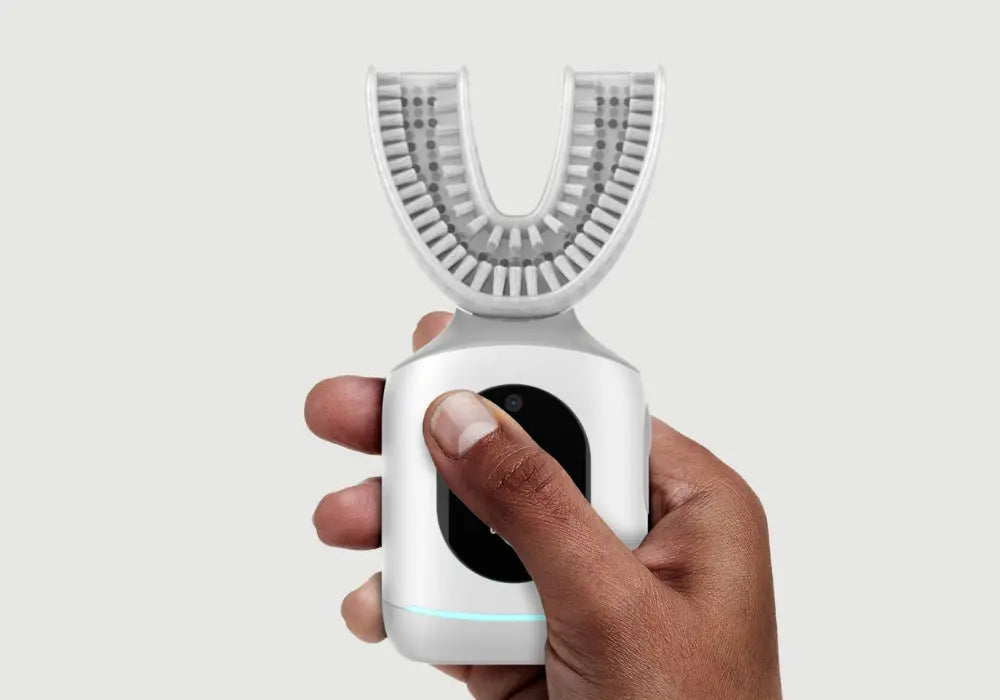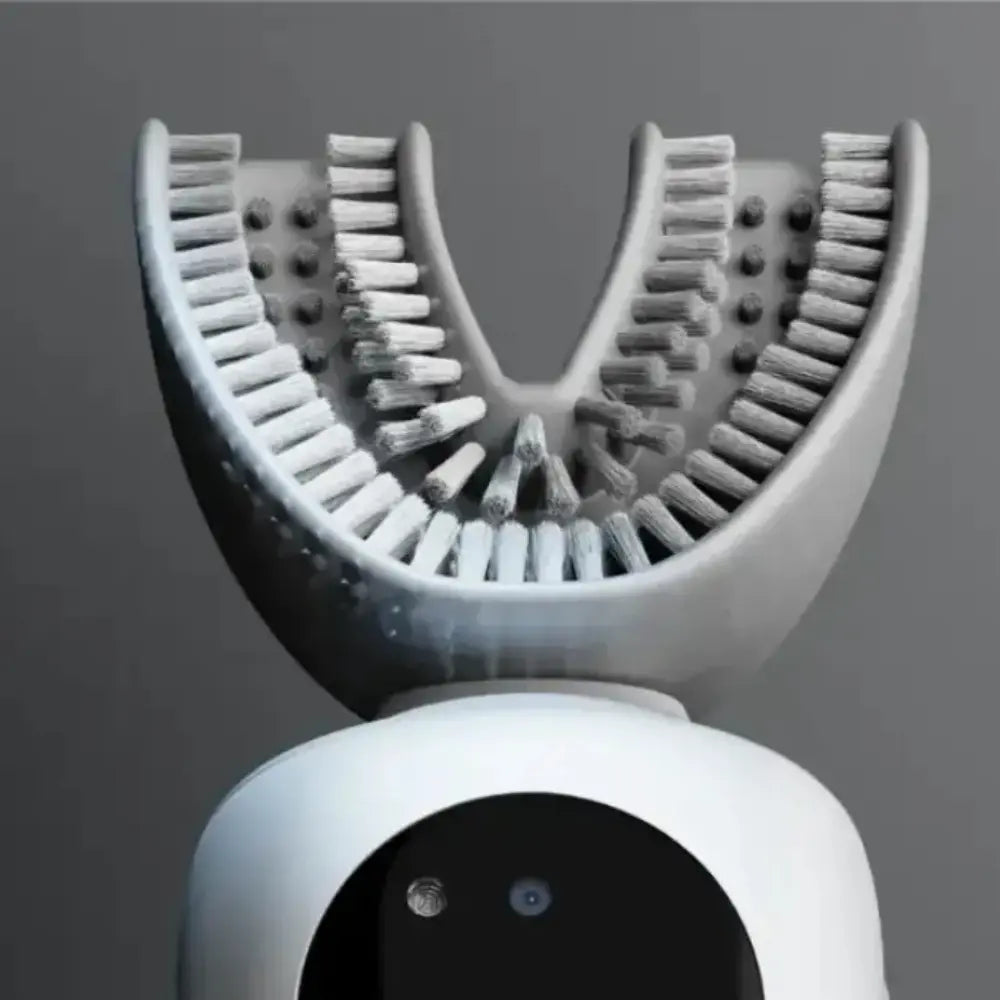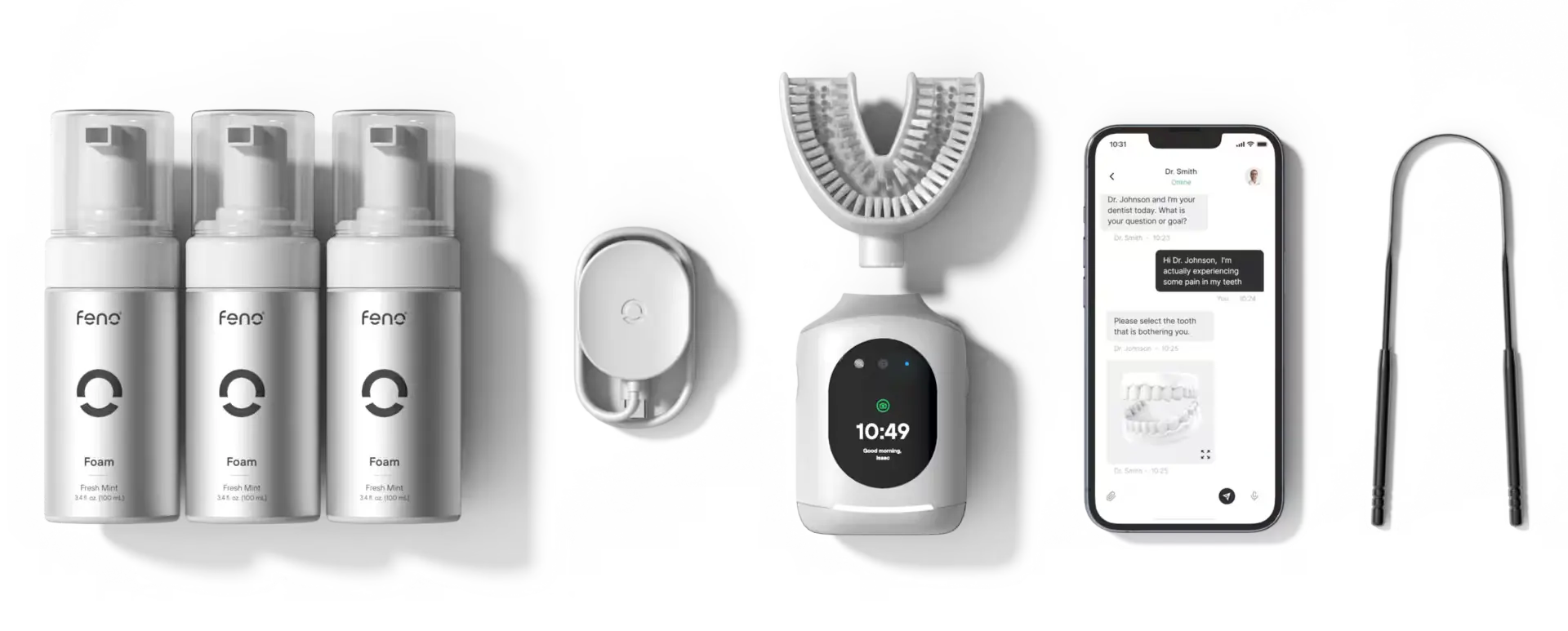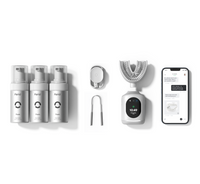
U Brush vs. Traditional Toothbrush Brushes: A Complete Side-By-Side Comparison
Maintaining good oral hygiene through daily dental care is essential for keeping teeth and gums healthy. For decades, people have relied on conventional toothbrushes, both manual and electric, to clean their teeth. An innovative contender has entered the scene: the U-shaped toothbrush for adults, often dubbed a “U Brush,” which promises to simplify and even automate the brushing process. In this comprehensive comparison, we will examine how the modern U-shaped toothbrush for dental health compares to traditional toothbrushes.
Traditional vs. Electric Toothbrushes
Traditional toothbrushes have a long history of effective use, and they generally come in two main types: manual and electric. When comparing, the core difference lies in how the brushing motion is generated. A manual brush requires the user to move it back and forth and in circles across each tooth surface, whereas an electric brush automates much of this motion with powered bristle movements. Manual brushing typically relies on the user’s technique and speed – on average, a person can make roughly 300 strokes per minute by hand, while electric brushes oscillate or vibrate the bristles at thousands of strokes per minute, greatly increasing the cleaning motion on the teeth. In other words, a powered brush can do more brush strokes in 10 seconds than a person could likely do in a couple of minutes with a manual brush, which can translate to more efficient plaque removal in the same amount of time.
From a performance standpoint, research has generally found that manual brushing can clean teeth effectively when done correctly; however, electric brushes often have a slight edge in plaque removal and reduction of gingivitis. Some electric toothbrush models are more effective at removing plaque than regular manual brushes under typical conditions. The bristle heads of electric brushes (such as oscillating or sonic toothbrushes) move rapidly and can reach into crevices better with less effort from the user. Many electric models also have built-in timers to encourage the recommended brushing duration (more on that soon). However, it’s essential to note that the efficacy of any toothbrush still depends on using proper technique and brushing all areas of the teeth. A diligent person with a manual brush can achieve excellent results, whereas someone rushing, even with a fancy electric brush, might miss spots.
What Is a U-Shaped Toothbrush?
Unlike a conventional toothbrush, which has a small head that you move from tooth to tooth, a U-shaped brush is designed to clean all your teeth at once. It typically consists of a mouthpiece-shaped brush head attached to a handle or power unit. This mouthpiece is lined with bristles on both sides, so that when you bite into it, your teeth are enveloped by bristles on all surfaces at the same time. An electric motor in the unit then vibrates the mouthpiece, causing the bristles to brush against your teeth and gums. The U-shaped electric toothbrush aims to automate brushing by covering the entire mouth and cleaning all teeth in one go.

The design and operation of U-shaped toothbrushes are quite different from traditional brushes. It uses a tray similar to a mouthguard that you bite into, and an attached motor then vibrates the whole unit to create a brushing sensation across the teeth. Unlike a standard toothbrush, where you manually scrub each tooth with individual bristle strokes, the U-shaped device’s bristles generally do not move independently; instead, the vibration causes the entire mouthpiece to shake. Some models use a side-to-side or ultrasonic vibrating motion to help dislodge plaque. Because the U-shaped mouthpiece touches many teeth at once, the idea is that you can clean all surfaces simultaneously rather than one tooth at a time.
Many use the term ultrasonic u-shaped toothbrush as well, indicating they emit high-frequency vibrations or waves. The U Brush concept typically incorporates a power unit that offers various modes or intensities of vibration, and some models even include features such as LED lights or built-in timers. The materials used for the mouthpiece bristles can differ: early models tended to use silicone bristles for their softness, while newer designs incorporate nylon bristles to enhance cleaning effectiveness.
Because this design is a significant departure from the traditional toothbrush, it’s meant to simplify the brushing process. Instead of carefully angling a small brush head and making many strokes on each tooth, you bite into the U-shaped mouthpiece and let it do the work. In theory, this ensures that all tooth surfaces are being brushed at the same time and with a consistent technique. It is a novel approach in the world of toothbrush styles, representing a new category of daily brushing technology for oral care.
Cleaning Performance and Effectiveness
The ultimate measure of any toothbrush is how well it cleans your teeth and helps maintain oral health. Plaque removal, cavity prevention, and gum inflammation reduction are key goals of brushing. Newer designs of U-shaped brushes have made improvements. A big development was the introduction of U-shaped brush heads that use nylon bristles instead of relying solely on floppy silicone nubs. Nylon bristles can actually scrub the tooth surfaces more effectively, similar to a traditional brush, especially when the user moves the device slightly. Indeed, one U-shaped product was the first to earn the American Dental Association’s Seal of Acceptance after demonstrating its ability to remove plaque and reduce gingivitis when used correctly and effectively.
Compared to conventional manual and electric toothbrushes, these devices are engineered to deliver a more thorough clean by simultaneously contacting all tooth surfaces. This has been known to result in noticeably cleaner teeth after each session, attributing this to the design that envelops every tooth with bristles and ensures consistent coverage. One of the most significant advantages is the marked reduction in dental plaque. Switching to a high-quality U-shaped toothbrush results in a substantial decrease in the buildup of plaque on their teeth, even after shorter brushing sessions. This improvement is beneficial for those who previously struggled with reaching all areas of the mouth using traditional brushes, as the mouthpiece design helps eliminate common “missed spots.”
Gum health is another area where these have shown strong results. Users can experience less gum bleeding and inflammation after making the switch, especially when using a device with soft yet effective bristles. The gentle, uniform pressure applied by the mouthpiece can help prevent over-brushing, a common issue with manual brushes that can lead to gum recession or irritation. By minimizing harsh scrubbing and distributing pressure evenly, U-shaped toothbrushes promote healthier gums and a more comfortable brushing experience overall. People with sensitive gums or a history of gum problems often find that this style of brush allows them to maintain their oral hygiene routine without discomfort. These devices are often recommended for individuals who have difficulty maintaining proper brushing technique or who may not brush for the full recommended duration. The automated cleaning action and built-in timers help ensure that users achieve a comprehensive clean every time, regardless of age or ability. The result is a noticeable improvement in overall oral health, including fresher breath, cleaner teeth, and healthier gums.
U-shaped toothbrushes offer a convenient and effective solution for improving plaque removal and gum health. Their innovative design, ease of use, and ability to deliver consistent results make them a compelling choice for anyone seeking to enhance their daily oral care routine and achieve better long-term dental outcomes.
Brushing Time and Convenience
One of the biggest practical differences between using a U-shaped automatic brush and a traditional toothbrush is the time and effort involved in the actual brushing process. With a regular toothbrush (manual or electric), dentists universally recommend brushing for about two minutes, twice a day. Dental experts emphasize that spending a full two minutes ensures you properly clean every surface of every tooth; brushing for much less than that is usually not enough to get the job done. Those two minutes are typically needed because you are cleaning one small area at a time – you might divide your mouth into quadrants or sections and spend roughly 30 seconds on each, systematically working the brush along each tooth and the gumline.
Now consider the promise of the U-shaped ultrasonic toothbrush devices: some claim to clean all your teeth in as little as 20 to 30 seconds total. From a time-saving perspective, this is a huge advantage. It potentially makes it much easier to achieve consistent oral hygiene habits because the effort required is minimal and over so quickly. People who feel too rushed in the morning or too tired at night to brush thoroughly for two minutes might be more likely to use a gadget that finishes the task in a matter of seconds.

Convenience goes beyond just the time saved. Using a U-shaped automatic brush is also extremely simple: you apply some toothpaste, put the device in your mouth, turn it on, and gently bite or hold in place while it cleans. Some models are completely hands-free, allowing you to do other things (like gently washing your face or just relaxing) during the brief brushing cycle. For individuals with busy lifestyles, this hands-off approach to daily brushing technology can be appealing – it essentially multitasks the act of brushing all teeth at once. Additionally, automatic timers ensure you brush for the intended duration; the device shuts off or signals when the cycle is complete. This removes the guesswork and ensures consistency every time.
Ease of Use and User Experience
For many first-time users, the U Brush can seem almost like a gadget from a sci-fi movie: you pop a mouthguard-like device in and it supposedly cleans your teeth automatically. The good news is that it generally doesn’t require any special skill to use – it’s designed to be foolproof to some extent. This ease of use is one of its strongest selling points, especially for people who struggle with the correct technique using a manual brush. In a traditional brushing scenario, remember to angle the brush at a 45-degree angle to the gumline, make gentle circular motions or short strokes, cover every quadrant of the mouth evenly, and avoid brushing too hard. By contrast, the U-shaped brush’s promise is that you insert it and let it do its job, which theoretically removes the element of human error or inconsistency.
While it’s true you don’t need to manually scrub each tooth, users do have to learn the best way to position and move the device for optimal results. Often, the first try might feel strange – the vibrations can be ticklish or unusual, and you might wonder if it’s cleaning anything. Many manufacturers and dentists recommend that, even with a U-shaped automatic brush, you should still make small motions to help the bristles sweep along the teeth. Rather than just biting down and sitting still, moving your jaw around slightly can ensure the bristles reach the inner and outer sides of the teeth properly.
The entire mouthpiece, which directly contacts the teeth and gums, is commonly made from soft, food-grade silicone or a similarly pliable material. This deliberate material choice significantly minimizes the potential for discomfort, scrapes, or irritation often associated with the firmer bristles or edges of traditional brushes. When users position the U-shaped device in their mouth, the soft silicone molds to the contours of their oral cavity, ensuring that the cleaning process is not only effective but also remarkably gentle, a particular benefit for individuals with sensitive teeth, receding gums, or those prone to gum irritation. This focus on soft, pliable materials is a cornerstone of the U-shaped brush's design, prioritizing user comfort and a positive brushing experience. Beyond the immediate comfort, the innovative material choices and ergonomic shape of U-shaped toothbrushes contribute to their long-term appeal and effectiveness. The non-abrasive nature of the silicone minimizes microscopic damage to enamel over time, a concern with some stiffer bristle types. The material's inherent resistance to bacterial growth helps maintain a more hygienic brushing tool, contributing to overall oral health. The flexibility of the silicone also allows for a more comprehensive cleaning action, as the material can adapt to various tooth shapes and gum lines, reaching areas that traditional brushes might miss. This adaptability, combined with the gentle pressure distributed evenly across the entire arch of teeth, promotes better gum health by reducing localized stress points. The U-shaped design also encourages a consistent brushing technique, as the user simply needs to bite down and move the device side to side, rather than manually maneuvering a brush around individual teeth. The sensation of having an entire tray in your mouth might be odd at first, but most people get used to it quickly, especially since it’s only in there for half a minute or so. Some users with sensitive gag reflexes might need to ensure the mouthpiece isn’t too large or going too far back in the mouth, but typically these are shallow trays that don’t trigger gagging.
Choosing the Best U-Toothbrush for Daily Use
With multiple options available, how do you decide which is the best toothbrush for daily use for you? The answer will depend on your individual needs, preferences, and any specific oral health considerations. Let’s break down a few key factors to consider in this side-by-side comparison:
- Effectiveness: If your primary goal is the absolute best plaque removal and gum health, you’ll want a toothbrush that you can use to clean every area of your mouth thoroughly. A high-quality electric toothbrush or a well-executed U-shaped automatic brush can both be highly effective, especially if you have a good routine. Manual brushes can be just as effective in the hands of a diligent brusher. The best toothbrush is one that you will use consistently and adequately. If a u-shaped adult toothbrush motivates you to brush regularly and you use it correctly, it could lead to better results than owning the fanciest electric brush but never using it for the full 2 minutes.
- Ease and Convenience: Think about your lifestyle and any challenges you face with brushing. If you often skip brushing at night because you’re too tired, a U Brush that works in 30 seconds might help you maintain your routine without feeling burdened. If you travel a lot or camp where charging is an issue, a manual brush might be more practical. If you have arthritis or trouble gripping a small handle, an electric toothbrush with a thicker handle or a U-shaped brush could be better. The key is to find a tool that integrates smoothly into your daily dental care habits. The less friction, the more likely you’ll brush as recommended.
- Technique and Learning: Are you someone who has been told by your dentist that you’re missing spots or brushing too hard? If so, an automatic solution might help eliminate those errors – an electric brush can prevent overly aggressive brushing by doing the motion for you, and a U-shaped brush can ensure even coverage across all teeth if used properly. On the other hand, if you take pride in your meticulous brushing technique and prefer having control, you might opt for a manual or traditional electric brush. The U Brush is somewhat “one-size-fits-all” in its approach, which may not satisfy someone who likes to give extra attention to specific teeth or areas.
- Cost and Longevity: Manual toothbrushes are cheapest by far – you can get one for a few dollars. Electric toothbrushes range from affordable (basic models under $20) to very expensive (smart models over $200). U-shaped toothbrush devices also range in price, but many of the well-known ones tend to be on the higher end of the spectrum, as they often incorporate newer technology. Consider also the ongoing costs: manual brushes and electric brush heads should be replaced every 3-4 months as bristles wear out. U-shaped brush mouthpieces will also need periodic replacement. There’s also the cost of charging (minimal electricity use) or replacing a rechargeable battery eventually. When evaluating cost, factor in what you’re comfortable investing in your oral health. Sometimes, a higher upfront cost pays off if it leads to fewer dental problems down the line due to better brushing.
- Specific Oral Health Needs: Some people have special considerations. If you have braces or other orthodontic appliances, a small traditional brush head might navigate around brackets better than a U-shaped tray (though there are some U-shaped brush designs for braces, too). If you have very sensitive gums, you might lean toward a softer manual brush or a gentle sonic brush on a low setting, rather than the potentially harsh vibration of an automatic tray – or ensure the U Brush has soft bristles and a gentle mode. If you’re primarily concerned with surface stains and whitening, neither manual nor U-shaped brushes inherently whiten teeth beyond cleaning off surface stains, but some electric and U-shaped models come with LED blue lights that claim to assist with whitening. You’d still rely on proper brushing plus whitening toothpaste or treatments in either case.
After weighing these factors, you may find that you’re drawn to the idea of the U-shaped brush, or you may decide to stick with the traditional approach. For those interested in trying the U-shaped approach, it’s important to choose a high-quality product. Look for one with good reviews, effective bristle design, and clear instructions. One such option is the Feno U Brush, an ultrasonic U-shaped toothbrush specifically designed for adults, aiming to deliver a full-mouth clean with minimal effort. This model features an advanced mouthpiece that conforms to adult teeth and utilizes high-frequency vibrations to dislodge plaque from all surfaces. Features such as a built-in timer and multiple cleaning modes enable users to customize their experience. As with any device, you’ll want to follow the usage directions carefully to get the best results. It’s easy to shop U brush online through the official websites of manufacturers like Feno, making it convenient to acquire these new brushes and their accessories. The U-shaped automatic toothbrush can be a game-changer, especially for individuals seeking an easier way to maintain consistent brushing habits or those with dexterity issues. It brings the concept of electric toothbrush alternatives to a new level by essentially doing all the brushing for you in a short burst.
The choice between a U Brush and a traditional toothbrush comes down to personal preference and needs. If you value innovation and efficiency and are willing to invest in new technology, a U-shaped brush might be worth a try for your daily routine. If you’re a stickler for the tried-and-true or have a brushing method that works well for you, you might stick with your manual or powered brush with confidence. Both paths can lead to strong, healthy teeth and gums as long as you’re committed to consistent oral hygiene practices – brushing twice a day, flossing, and regular dental check-ups.
Sources
-
Pagliaro, U. et al. (2020). Efficacy of a U-Shaped Automatic Electric Toothbrush in Dental Plaque Removal: A Cross-Over Randomized Controlled Trial pmc.ncbi.nlm.nih.govpmc.ncbi.nlm.nih.gov
-
Gila C. Dorostkar, DDS. (2023). U-Shaped Toothbrushes – Worth the Hype? drdorostkar.comdrdorostkar.com
-
Cleveland Clinic (2023). How Often Should You Brush Your Teeth? health.clevelandclinic.org
-
Center for Dental Excellence Blog. Manual, Electric, and Sonic Toothbrushes ctcde.com




